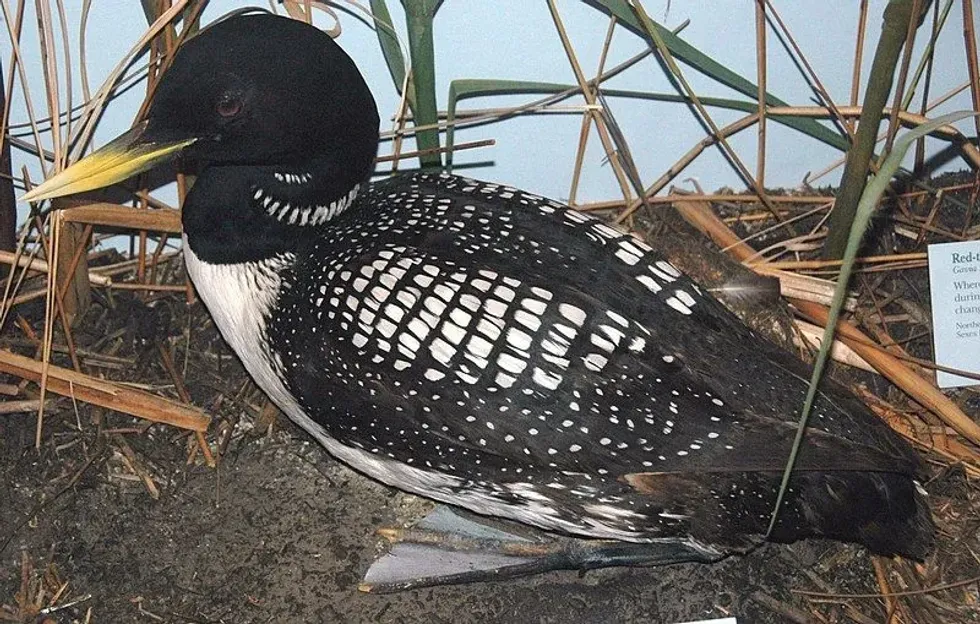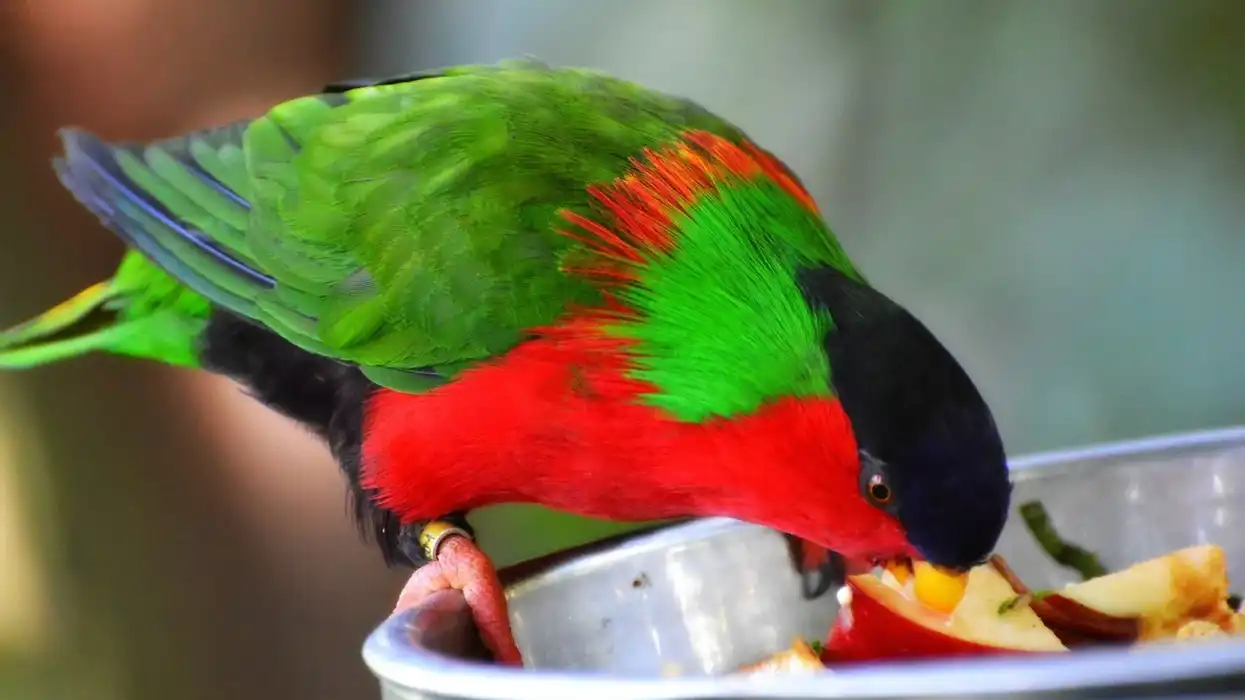Let us discover a fascinating bird species from North America today. A bird called the yellow-billed loon. These loons have a large breeding range extending to 1.2 million square kilometers. They have unique yellow bills.
Can you imagine seeing birds that are active both day and night? Yes, our little birds here are diurnal creatures, always busy engaging in fish hunting, diving, or flying. They have a great sense of self-care, as you can find these birds grooming themselves most of the time.
They have an interesting range of vocalizations. They sound melancholic at night, and you may mistake it to be some crying. These bird species tend to get quieter in the winter season.
Find out more about other birds right here with our Pacific loon facts and carrion crow facts.
Yellow-Billed Loon Interesting Facts
What type of animal is a yellow-billed loon?
The yellow-billed loons are the largest loons classified in the loon family. The other loons in this family are the Pacific loon, the common loon, and the red-throated loon. They are similar looking to the common loon but are differentiated by the color of their beak.
What class of animal does a yellow-billed loon belong to?
These loon species are part of the Aves class. They are warm-blooded animals that have forelimbs modified as wings.
How many yellow-billed loons are there in the world?
The global population of these yellow-billed loons is estimated to be between 16,000-32,000. A further breakdown shows roughly 8000 loons present in Canada and 5000 in Russia. The breeding grounds in Alaska see 4000 members of the species. Global warming and water pollution are the greatest threat to these creatures.
Where does a yellow-billed loon live?
The yellow-billed loon range is distributed among the Tundra lakes, marshy swamps, ponds, or rivers found in Russia, Canada, and Alaska.
Non-breeding or the wintering grounds range to Coastal waters of the Pacific coast, including the west coast of the United States from Alaska to British Columbia, extending to California and Canada, Finland, and areas extended to Japan and China.
What is a yellow-billed loon's habitat?
The natural abode for these bird species is the low-lying Tundra with Freshwater and marine coastline waters. The habitat range is chosen based on multiple facets like safety from predators, the presence of strong waves that may cause nest damage, availability of food, etc.
They occupy shallow waters and spend a lot of time in the coastal waters in inlets, bays, and Island groups.
Who do yellow-billed loons live with?
These birds are generally loners, though they might associate with other birds of their species during the fall or spring migration. They are highly territorial animals. When a loon dies, the left-out member of that pair finds another partner. They depict subtle courtship behavior by bill-dipping, swimming by their partner's side, circling, and mild hooting between the couple.
How long does a yellow-billed loon live?
The yellow-billed loon, Gavia adamsii, may live up to 20 to 30 years. But, unfortunately, these bird species are prone to lead poisoning that causes them to die gradually.
How do they reproduce?
This loon mates for life. The breeding season starts in early June. The process begins with the nest-building activity in the breeding grounds, which is on the edge of the water. Then, the breeding pair carry out the activity.
The nests have depression and are made of tundra vegetation. After copulation, the female may lay up to two eggs which are light brown with brown spots in appearance. The incubation lasts for 27-29 days, and the hatchlings are precocial that may fledge by 30-55 days.
What is their conservation status?
IUCN places these birds under the Near Threatened category. The major threats to this species include overfishing and water pollution in their wintering grounds. Another challenge is the rise in water levels due to Global warming.
Yellow-billed Loon Fun Facts
What do yellow-billed loons look like?

The breeding plumage of these loons species is a black head, white belly, and mantle that looks more like a chessboard. Do not miss the purple tinge on their head and neck.
One may get confused between the yellow-billed loon and the common loon in their breeding plumage. The non-breeding or the winter plumage takes a duller look with the fore neck and chin looking white. The bills are yellowish-looking and slightly uplifted in angle.
How cute are they?
Their antics on the water's surface and their varied vocalizations make them attractive creatures to watch on. You can't have a dull moment with these waterfowls.
How do they communicate?
The yellow-billed loon, Gavia adamsii, has different types of calls to communicate among the birds of its flock. The yellow-billed loon call sounds like a yodel or a crazy laughter-like call in their breeding grounds in the summer season. The yodel sound may sound similar to a Common loon, but for Yellow-billed loons, its more coarse, slow, and deep-pitched.
When danger looms, the sound of the call gets slow and low, and it is called tremolo. These loons also have special body postures and certain behavior while defending their territories. They dip their bills, have jerky motions while swimming, raise their neck and front to establish authority.
How big is a yellow-billed loon?
These loons can grow in length up to 30 to 38 in ( 76 to 97 cm). Compared to the common loon that measures 28 to 32 in (71 to 81 cm), the yellow loons are larger by a few inches.
How fast can a yellow-billed loon move?
One interesting fact about the yellow-billed loons is that they need to cover a good amount of distance before they get airborne. Did you know these loons may need a quarter of a mile to take off for a flight?
Their flights are powerful and may muster the largest speed of 60 mph (96.6 kph). While landing, they glide breast first, followed by their feet.
How much does a yellow-billed loon weigh?
The yellow-billed loon, Gavia adamsii, weighs between 8.8-14.1 lb (4-6.4 kg). They are two times heavier than the Pacific loon that weighs 2.9-7.5 lb (1.3-3.4 kg).
What are the male and female names of the species?
The male and female loons are male yellow-billed loons and female yellow-billed loons.
What would you call a baby yellow-billed loon?
The baby yellow-billed loons are called chicks or hatchlings. These young ones are independent 30 days after birth and feed on insects, small fishes, and plant material.
What do they eat?
The yellow-billed loons eat smaller fishes like sculpins, Alaska blackfish, nine-spine sticklebacks, etc. These fish species are visual predators and go deep into the water to hunt their prey. In their habitat range, the juvenile yellow-billed loons feed on plant material.
Are they poisonous?
These loons are known to be affected by lead poisoning. However, since they are not popular in the culinary world due to the not-so-tasty flavor of their meat, humans are unaffected by loons.
Would they make a good pet?
Being wild animals, loons will not make good pets. The domestication of loons is very challenging. As the population of the yellow-billed loons is Near Threatened, they are protected by law, and it is illegal to have loons as pets in most places.
Did you know...
Have you ever wondered what a group of loons is called? They are called by various terms like cry, raft, asylum, or a water dance of loons.
The fishing nets placed for commercial or research purposes threaten these bird species as many birds drown in these nets.
These loons are known to be clumsy walkers due to the placement of their legs at the far end of their bodies.
How long can a loon stay underwater?
These loon species have the credit for being the best diving birds worldwide. These loons can stay below the water surface for over a minute.
After that, their feet become propellers, and the wings become the steering wheel. They have been found at a depth of 240 ft (73.5 m) underwater, indicating their prowess in diving. Even when they sense danger, their instinct is to dive into the water and stay hidden rather than flying away.
What month do loons have babies?
The breeding season for the yellow-billed loons is the end of May to early June. The female birds lay around two eggs that are brown in color with dark brown spots. The eggs hatch after 27 - 28 days. So we can witness the birth of the young chicks by the end of June or early July.
Here at Kidadl, we have carefully created lots of interesting family-friendly animal facts for everyone to discover! Learn more about some other birds from our black-throated loon facts and great crested flycatcher facts pages.
You can even occupy yourself at home by coloring in one of our free printable yellow-billed loon coloring pages.









